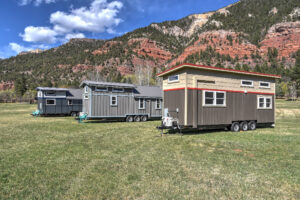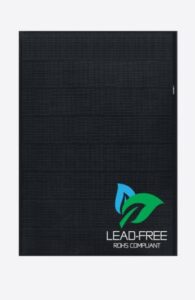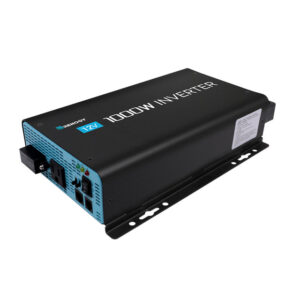
Harnessing The Power: Adjustable Tilt Mounts for Solar Efficiency
Imagine a world where every ray of sunshine is captured and transformed into clean, sustainable energy. That’s the world we’re building with adjustable tilt mounts for solar panels. These innovative systems allow us to optimize our solar panels, ensuring they soak up as much sunlight as possible, no matter the time of year. It’s not just about being eco-friendly; it’s about being energy-smart and cost-efficient.
Article-at-a-Glance: Key Takeaways
- Adjustable tilt mounts can significantly increase solar panel efficiency by aligning with the sun’s position.
- Optimal tilt angles depend on geographic location and can be calculated for maximum energy capture.
- Seasonal adjustments to the tilt of solar panels can lead to a substantial boost in energy production.
- Choosing the right adjustable tilt mount involves considering factors like material durability and installation requirements.
- While there’s an upfront cost to adjustable systems, the increase in energy output can lead to greater savings over time.

The Basics of Solar Panel Tilt and Energy Capture
Let’s get down to brass tacks. Solar panels work best when they face the sun directly. The angle of your solar panels—referred to as the ’tilt’—can make or break your system’s efficiency. A well-angled panel catches more sunlight and produces more power. It’s like adjusting a sail to catch the perfect amount of wind. Adjustable tilt mounts let you change the tilt of your panels throughout the year to align with the sun’s path. This means you’re always getting the best performance out of your solar setup.

Comparing Fixed and Adjustable Solar Mounts
Fixed mounts are set-it-and-forget-it solutions. They’re bolted down at a specific angle and don’t move. They’re simple, but they can’t keep up with the sun’s changes throughout the year. On the flip side, adjustable mounts are all about flexibility. They can be shifted manually or automatically to follow the sun’s seasonal journey across the sky. It’s a bit more work, or a bit more upfront cost for automated systems, but the payoff is a significant uptick in energy capture.
Understanding the Solar Angle: How Tilt Affects Production
Think of the solar angle like a game of tag between the sun and your solar panels. When the sun is directly overhead, your panels are “it.” As the sun moves, the angle changes, and your panels need to adjust to keep up. When they’re angled just right, they tag the sun, soaking up all that glorious energy. In the winter, the sun is lower in the sky, so you’ll tilt your panels more steeply to catch it. In the summer, when the sun is high, you’ll flatten them out. It’s a year-round dance to stay in sync with the sun.

The Science of Solar Tilt: Optimal Angles for Maximum Capture
The quest for the optimal angle is a bit like finding the secret ingredient in a masterful recipe—it can make all the difference. The angle that will give you the most bang for your buck depends on your latitude. Closer to the equator? You’ll want a tilt angle that’s closer to horizontal. Living in the higher latitudes? Steeper angles are your friend. But it’s not just about latitude. You also have to consider local weather patterns, the landscape, and even the time of year. It’s a balancing act, but when you find that sweet spot, your energy production can soar.
Geographic Impact on Solar Tilt Settings
Your location on the globe isn’t just good for your GPS—it’s crucial for setting up your solar panels. If you’re lounging near the equator, the sun’s pretty consistent year-round. So, your tilt doesn’t need to change much. But venture farther north or south, and the sun’s angle changes dramatically with the seasons. That’s where adjustable tilt mounts come in handy. They let you tweak the tilt to match the sun’s lower or higher path in the sky, depending on the time of year. It’s like adjusting your seat for the best view at a concert—location matters.
Seasonal Adjustments: Harnessing the Sun All Year Round
As the Earth struts its stuff around the sun, the angle of sunlight changes with the seasons. That’s why adjusting your solar panel tilt every few months is key to keeping your energy harvest on point. In summer, the sun is your overhead friend, so a lower tilt is ideal. Come winter, it’s playing hard to get, hanging low in the sky, so you’ll want a steeper tilt to catch those elusive rays. It’s a bit like chasing the perfect tan—you have to move with the sun.
Angles and Efficiency: How Tilt Maximizes Energy
Getting the angle right is like hitting the bullseye in darts—it’s where the high scores are. When solar panels are tilted at the perfect angle, they get the most direct sunlight, which means more power for you. It’s a simple equation: better angle equals more light equals more energy. Think of it as sunbathing; the right angle gets you that golden glow, or in this case, golden energy.
Selecting the Right Adjustable Tilt Mount
Choosing the right adjustable tilt mount is like picking the right pair of shoes. You want them to fit well, last long, and look good (well, maybe that last part is more about personal pride). But seriously, the right mount will support your solar panels through thick and thin, rain or shine, for years to come. It’s a decision that’s worth weighing carefully.
Material Matters: Durability and Longevity
The materials your tilt mount is made of are like the foundation of a house. You want something strong, durable, and weather-resistant. Aluminum is a popular choice—it doesn’t rust, it’s lightweight, and it can take a beating from Mother Nature. Stainless steel is another tough cookie, known for its sturdiness. Whichever material you choose, think long-term. A good mount will keep your solar panels safe and sound for decades.
Installation Essentials: What to Look For
When it’s time to install, you want to make sure you’re set up for success. Look for mounts that come with clear instructions and all the necessary hardware. You don’t want to be halfway through setting up only to find you’re missing a crucial bolt or tool. Also, consider how the mount will fit with your solar panels—compatibility is key. And don’t forget about the warranty. A company that stands behind its product is a company you can trust.
Cost vs. Output: Balancing Budget and Benefits
Think of adjustable tilt mounts as an investment. Sure, they might cost a bit more upfront than fixed mounts, but they’re the gift that keeps on giving. By optimizing your solar panels’ tilt, you’re squeezing every drop of energy from the sun. Over time, that extra juice can lead to big savings on your energy bill. It’s about looking at the big picture—spend a little more now to save a lot later. Just like buying a quality tool that lasts years, rather than a cheap one you’ll have to replace next season.
Step-By-Step: Installing Your Adjustable Tilt Mount
Roll up your sleeves—it’s time to get those tilt mounts installed. But don’t worry, you don’t need to be a rocket scientist or even a handyman. With some basic tools, a bit of elbow grease, and these simple steps, you’ll have your solar panels basking in the sun’s glory in no time.
Site Assessment: Choosing the Best Location
First things first, you need the perfect spot. A place that gets plenty of sunlight, away from shadows cast by trees or buildings. Think of it as picking the sunniest spot on the beach. Once you’ve found your solar sweet spot, make sure it’s stable ground. You wouldn’t build a sandcastle where the tide will wash it away, right? Same goes for your solar panels.

Setting the Angle: Initial Adjustment Guidelines
Now, let’s talk angles. If you’re at the equator, you’ll want your panels pretty flat, at about a 15-degree tilt. As you move away from the equator, increase the tilt. A good rule of thumb is to set the tilt angle to your latitude minus 15 degrees in summer, and plus 15 degrees in winter. It’s like adjusting your recliner for maximum comfort—except it’s for maximum sun exposure. You can use a pyranometer to assist in determining the amount of sunlight that strikes the panels.
Maintenance and Upkeep of Tilt Mounts
Like any piece of equipment, your tilt mounts need some TLC to keep them working smoothly. A couple of times a year, give them a check-up. Tighten any loose bolts, clear off any debris, and make sure the moving parts are moving like they should. It’s no different than taking your car in for an oil change—it’s all about keeping things running smoothly.
The Forefront of Technology: Innovations in Adjustable Tilt Systems
The world of adjustable tilt mounts is always moving forward. We’re seeing smarter, more intuitive systems that make adjustments automatically, tracking the sun’s movement across the sky. It’s like having a smart home system that knows when to turn the lights on and off, but for your solar panels. These advances mean better performance, less maintenance, and even more energy savings down the line.
Automated Tilt Mounts: What’s Next?
The future is looking bright for solar technology, especially with the advent of automated tilt mounts. These clever devices take the guesswork out of finding the perfect angle for your panels. They use motors and sensors to track the sun’s path and adjust accordingly, ensuring your solar array is always positioned for peak performance. It’s like having a personal assistant for your solar panels, constantly tweaking the setup to soak up the maximum amount of sunshine every day.
Smart Systems: Integrating AI and IoT
Artificial intelligence (AI) and the Internet of Things (IoT) are revolutionizing how we interact with technology, and solar energy systems are no exception. Imagine a solar setup that not only adjusts itself but also learns from its environment. By integrating AI, these systems can predict weather patterns, understand seasonal changes, and even make real-time adjustments to avoid shade. IoT allows for remote monitoring and control, giving you the power to manage your solar panels from anywhere with an internet connection. It’s smart, it’s connected, and it’s the future of solar efficiency.
New Materials: The Future of Durable Design
As we push the boundaries of solar technology, new materials are emerging that promise even more durability and longevity for tilt mounts. Innovations like carbon fiber composites offer high strength with low weight, while advanced plastics can resist UV damage and corrosion better than traditional materials. These advancements mean tilt mounts that are not only more efficient but also built to last even longer in harsh weather conditions. It’s about creating a system that’s as tough as it is smart, ready to face the elements head-on.
Summing Up: The Vital Role of Adjustable Tilt Mounts in Solar
Adjustable tilt mounts are more than just a component of your solar panel system—they’re the key to unlocking its full potential. By allowing for precise positioning throughout the year, these mounts ensure that your panels are always at the optimal angle to capture the sun’s energy. This leads to a significant increase in efficiency and, ultimately, a greater return on your investment. Whether you opt for manual or automated systems, integrating adjustable tilt mounts into your solar setup is a smart move for a sustainable future.
Frequently Asked Questions (FAQ)
What are the most critical factors to consider when setting the tilt angle?
When it comes to setting the tilt angle of your solar panels, there are a few key factors to keep in mind:
- Geographic Location: Your position on the globe determines the sun’s path and, therefore, the ideal tilt angle for your panels.
- Seasonal Variations: As the seasons change, so does the sun’s trajectory. Adjusting the tilt to match these changes can optimize energy capture.
- Local Weather Patterns: If your area is prone to certain weather conditions, like heavy snowfall, you might need to adjust the tilt to prevent accumulation on the panels.
- Surrounding Obstacles: Buildings, trees, and other structures can cast shadows on your panels. Consider these when setting the tilt to avoid shading.
- Panel Specifications: The make and model of your solar panels can influence the ideal tilt angle, so be sure to check the manufacturer’s recommendations.
By taking these factors into account, you can ensure that your solar panels are positioned to capture as much sunlight as possible, maximizing your energy production and efficiency.
How often should the tilt of solar panels be adjusted?
Adjusting the tilt of your solar panels is like getting a regular check-up; it’s essential for optimal health—or in this case, optimal energy production. Generally, a biannual adjustment is a good rule of thumb. As we transition from summer to winter and back again, the sun’s position changes enough to warrant a tilt tweak. However, if you’re passionate about maximizing your energy capture, you might consider adjusting with the changing seasons, four times a year. Remember, the more aligned your panels are with the sun’s path, the more power you’ll harness.
Can I install an adjustable tilt mount on an existing solar system?
Upgrading to adjustable tilt mounts on an existing solar system is like giving your car a new set of high-performance tires. Yes, you can absolutely make the switch, and it can lead to better traction in your energy production. You’ll need to ensure that the new mounts are compatible with your current panels and that your installation site can accommodate the adjustments. It’s a bit like a puzzle; you have to make sure all the pieces fit. But once they do, the benefits of increased efficiency can make the effort well worth it.

How do automated tilt mounts compare to manual adjustments?
Choosing between automated tilt mounts and manual adjustments is like deciding between a self-driving car and a manual transmission. Automated systems offer convenience and precision; they’ll adjust your panels to the perfect angle without you having to lift a finger. Manual systems, on the other hand, are typically less expensive and give you full control over the adjustment process. It’s a balance between ease of use and hands-on involvement, and the right choice depends on your personal preference and budget.
In conclusion, adjustable tilt mounts for solar panels are akin to a finely tuned instrument in the orchestra of renewable energy solutions. They play a critical role in ensuring that your solar array performs at its best, capturing every possible ounce of sunlight. Whether you’re managing a sprawling solar farm or nurturing a modest rooftop garden of panels, the ability to adjust the tilt can lead to a harmonious boost in energy production. As we strive for a greener, more sustainable future, embracing technologies like adjustable tilt mounts is not just smart—it’s necessary. By staying informed and making strategic choices, we can all play a part in the grand symphony of solar energy.



